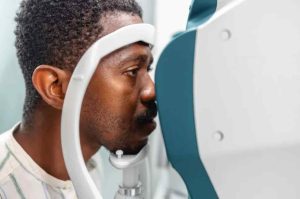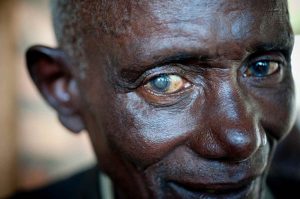Understanding the Cultural and Social Factors Affecting Vision Care in Nigeria
Vision care is an essential aspect of health care that aims to prevent, diagnose, and treat various eye diseases and conditions that can impair vision or cause blindness. However, vision care is not equally accessible or utilized by different segments of the population, especially in developing countries like Nigeria. According to the World Health Organization (WHO), Nigeria has an estimated 4.25 million people who are visually impaired, and 1.13 million who are blind. The main causes of visual impairment and blindness in Nigeria are cataract, glaucoma, refractive errors, trachoma, and onchocerciasis. Many cultural and social factors influence how people perceive, seek, and receive vision care in Nigeria. This article will explore some of these factors and their implications for vision health disparities and interventions.

One of the challenges that Nigeria faces in addressing these eye health issues is the lack of access to quality and affordable eye care services, especially in rural and remote areas. There is a shortage of trained eye care professionals, such as optometrists and ophthalmologists, as well as inadequate infrastructure and equipment. Moreover, there is a low awareness and demand for eye care among the general population, due to cultural beliefs, stigma, and lack of information.
To overcome these barriers, community engagement is a key strategy that can enhance optometry and vision care outreach in Nigeria. Community engagement involves working with local communities to identify their needs, preferences, and challenges, and to co-create solutions that are appropriate, acceptable, and sustainable. Community engagement can also help to raise awareness and educate people about the importance of eye health, the causes and prevention of eye diseases, and the availability and benefits of eye care services.

Culture and beliefs about eye diseases
One of the major factors that affect vision care in Nigeria is the culture and beliefs of the people regarding the causes and treatments of eye diseases. Many Nigerians, especially those living in rural areas, have traditional or religious views about eye diseases that may differ from the biomedical perspective. For example, some people may attribute eye problems to supernatural forces, such as curses, witchcraft, or evil spirits, and seek remedies from traditional healers, herbalists, or faith healers. Others may believe that some eye diseases, such as cataract or glaucoma, are inevitable consequences of aging or fate, and accept them as natural or divine will. These beliefs may prevent people from seeking timely and appropriate vision care from modern health facilities, or make them reluctant to accept certain interventions, such as surgery or glasses.

Gender and vision care
Another factor that influences vision care in Nigeria is gender. Studies have shown that women are more likely to suffer from blindness and visual impairment than men in Nigeria and that they have lower access to and utilization of vision care services. This is partly due to the socio-cultural norms and practices that limit women’s autonomy, mobility, education, and income, and that prioritize men’s health needs over women’s. For instance, women may face barriers such as lack of permission from their husbands or family members, lack of transportation or money, lack of awareness or information, or fear of stigma or discrimination when seeking vision care. Moreover, women may have higher exposure to risk factors for eye diseases, such as indoor air pollution, malnutrition, or infectious diseases, due to their domestic and reproductive roles.

Geographical and ecological variations in vision care
A third factor that affects vision care in Nigeria is the geographical and ecological diversity of the country. Nigeria has six geopolitical zones and various ecological regions, such as savanna, forest, and coastal zones that have different climatic, environmental, and socio-economic characteristics. These variations may influence the prevalence and distribution of eye diseases and the availability and accessibility of vision care services in different regions. For example, some regions may have higher rates of eye diseases, such as trachoma, onchocerciasis, or vitamin A deficiency, due to poor sanitation, water scarcity, or vector-borne infections. On the other hand, some regions may have lower coverage and quality of vision care services, due to inadequate infrastructure, human resources, or equipment.
Some of the benefits of community engagement for optometry and vision care outreach in Nigeria are:
– It can increase the coverage and reach of eye care services to underserved populations, by mobilizing community health workers, volunteers, and leaders to identify and refer people with eye problems to nearby facilities or mobile clinics.
– It can improve the quality and effectiveness of eye care services, by ensuring that they are culturally sensitive, patient-centered, and tailored to the local context and needs.
– It can enhance the sustainability and scalability of eye care interventions, by building trust, ownership, and collaboration among the stakeholders, such as the government, NGOs, private sector, and community members.
– It can empower the community members to take charge of their eye health, by increasing their knowledge, skills, and confidence to seek eye care services when needed and to adopt healthy behaviors that prevent eye diseases.

Conclusion
Vision care is a vital component of health care that can improve the quality of life and well-being of millions of Nigerians who suffer from blindness and visual impairment. However, vision care is not equally available or utilized by all segments of the population, due to various cultural and social factors that shape the perception, demand, and supply of vision care in Nigeria. Therefore, it is important to understand and address these factors to design and implement effective and equitable vision care interventions that are culturally sensitive, gender-responsive, and context-specific.




